Five creepy, crawly critters that live in the Chesapeake Bay
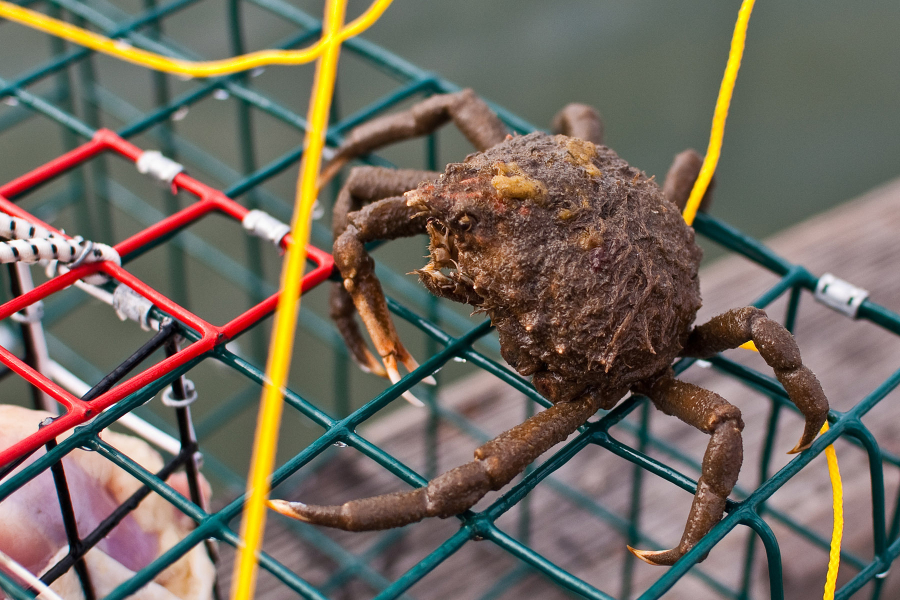
Not all the animals who live in and along the Chesapeake Bay and its tributaries are as cute as a playful river otter or as majestic as a soaring bald eagle. Whether hidden in cracks and crevices or buried deep in the mud, a multitude of scuttling, slithering and swarming critters call the Bay home.
1. Common Spider Crab
Covered in spines and coated in algae, this slow-moving crustacean probably wouldn’t win any beauty contests. The common spider crab is also known as the portly spider crab or the nine-spined crab. It belongs to a group known as “decorator crabs”: several species of crabs that use materials from their environment to hide from predators. For the common spider crab, this includes attaching algae, debris and small invertebrates to the hook-like hairs that cover its spiny shell.
Spider crabs eat mostly detritus—bits of dead plants and animals—which helps keep the ecosystem free of rotting materials. Their eyesight is poor, but they use the sensitive tips of their legs to identify food in the water or mud as they walk.
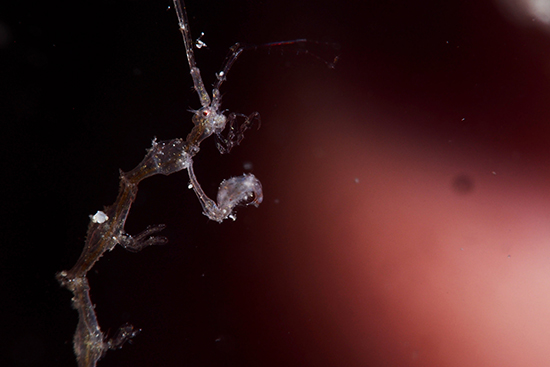
2. Skeleton Shrimp
Slender, stick-like and mostly transparent, the skeleton shrimp is an underwater resident of the mid- to lower-Bay. These tiny, gangly amphipods—a type of small crustacean—use their hooked, grasping rear legs to latch on to hydras, sponges and vegetation. These alien-like creatures use their folded front legs to capture algae, plankton and detritus. Some species of skeleton shrimp can even change color to blend in with their surroundings.
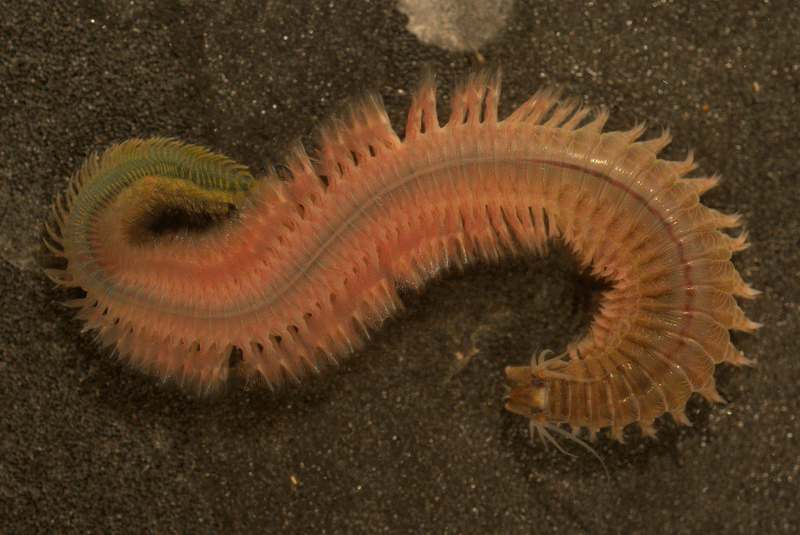
3. Bristle Worms
Crawling, burrowing and covered in tiny appendages, bristle worms can be found along the shorelines, mudflats and shallow waters of the Bay and its rivers. More than 110 species of bristle worms—also known as polychaetes, which translates to “many hairs”—have been recorded in the Chesapeake Bay region, including the common clam worm and the creatively-named ice cream cone worm.
Some species of polychaetes crawl freely throughout the shoreline and shallow waters, while others prefer to tunnel deep into the mud, seldom leaving their tube-like burrows. By feeding on plankton, algae and detritus, and being eaten by fish and birds, bristle worms play a key role in the Bay’s food web.
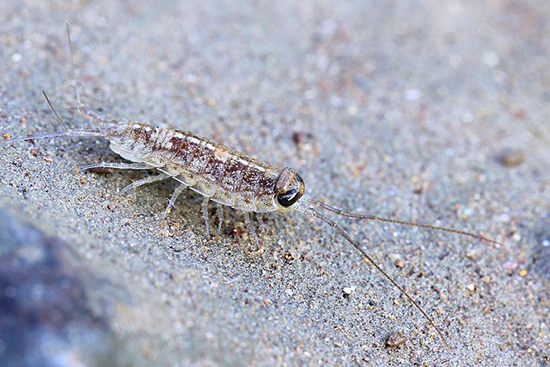
4. Sea Roaches
Although named for their similarity to common cockroaches, sea roaches or wharf roaches are not insects. They’re actually small isopods—a type of crustacean that often has a rigid, segmented outer shell instead of a skeleton. While sea roaches live mostly above water, they breathe through gills that must stay wet in order to work properly.
This means these critters are most often found scurrying close to the water line—on rocks, piers and jetties—scavenging for decaying bits of plant and animal matter.
Experts aren’t sure where sea roaches are originally from, but the first record of one of these critters in the Chesapeake Bay region occurred in the early 1900s. While not a native species, scientists haven’t found a significant negative impact from sea roaches on the native species of the area.
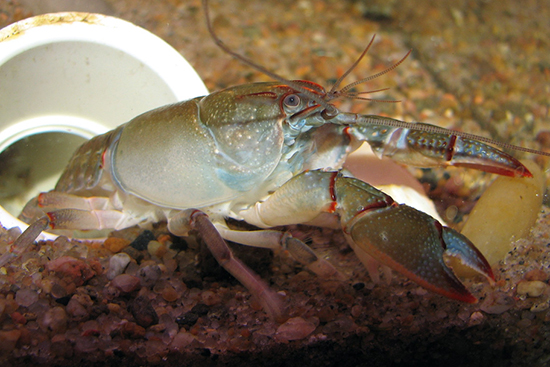
5. Devil Crayfish
The “devil” in this crayfish’s common name could refer to several of its characteristics: the red highlights that appear around its eyes and claws, its habit of spending most of its life in underground chambers or the painful pinch its claws can deliver.
Resembling a miniature lobster, the devil crayfish is found primarily in freshwater rivers and streams. It burrows deep underground and seldom emerges. Burrows can be recognized by their cone-shaped “mud chimney” entryways, formed by mud the crayfish carries and places by the entrance.
Want to learn about more creepy-crawlies that live in the Bay? Check out our field guide!

Comments
So enjoyed this at 4 this morning here in "quarantined" Southern California...sent to me via computer by Helen Lewis Peel through the South Dorchester Memories site. Being a retired teacher and having grandchildren who have visited the Eastern Shore with me over the years, I know they will enjoy this series, especially with all our schools closed "for the duration" (a comment often made by a friend of ours from England, who experienced the nightmare of WWII.) We are experiencing a very different nightmare...and it is impossible to see this "enemy"!!!
Thank you!
Your comment has been received. Before it can be published, the comment will be reviewed by our team to ensure it adheres with our rules of engagement.
Back to recent stories